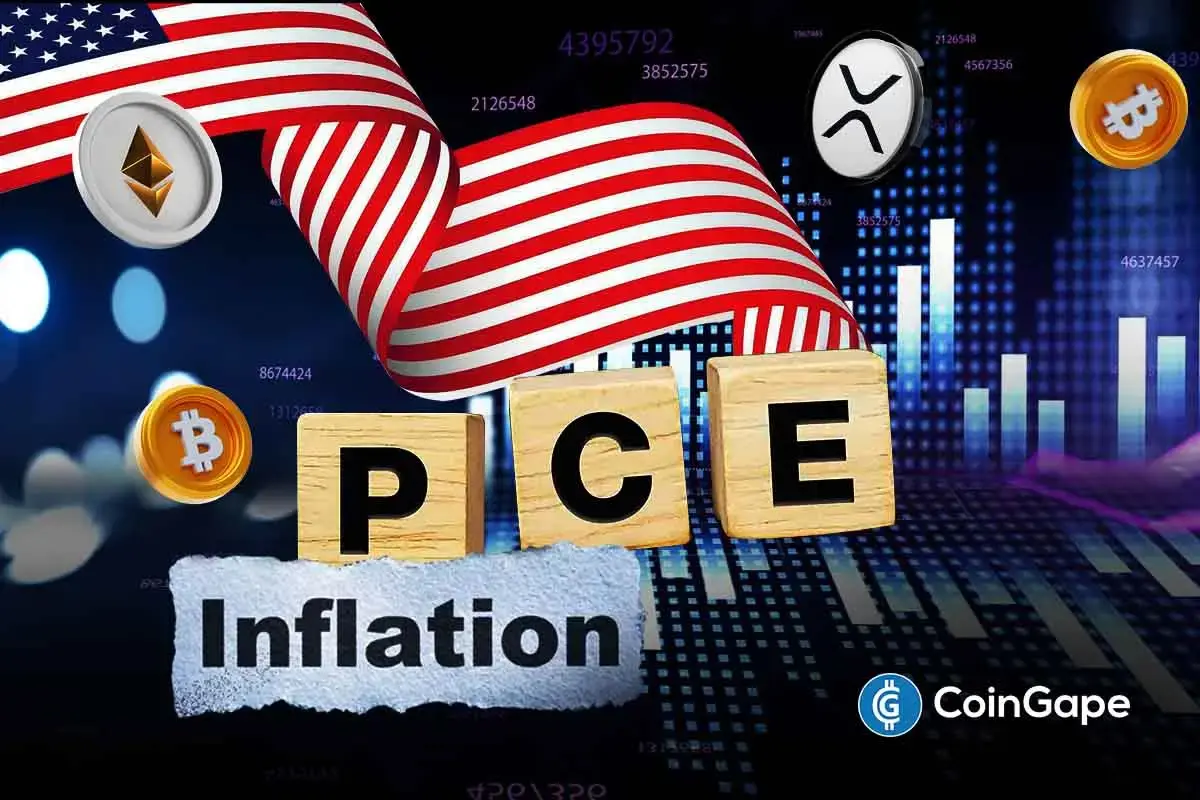US PCE Inflation Data Comes In At 2.3%, Will The Fed Cut Rates?

Highlights
- The PCE inflation data came in at 2.3% year on year and 0% month on month.
- Core PCE came in at 2.6% year on year.
- This suggests that the Fed is unlikely to cut interest rates.
The much-anticipated March PCE inflation data has come out in line with expectations, leaving market participants wondering about the Federal Reserve’s next move. This inflation metric is the Fed’s most preferred inflation gauge and suggests that Chair Jerome Powell and the FOMC will likely keep rates unchanged at the May meeting.
US PCE Inflation Data Comes In At 2.3%
U.S. Bureau of Economic Analysis data show that the March U.S. inflation data came in at 2.3% year-over-year (YoY), in line with expectations, and 0% month-over-month.
Meanwhile, the core PCE data came in at 2.6% YoY, the lowest since June 2024. This development is significant as this data is what the Fed uses as its primary inflation gauge and could determine its decision at the May FOMC meeting.
With the PCE inflation data stalling, Powell and the FOMC look unlikely to cut interest rates at the May meeting holding between the 6th and 7th. It is worth mentioning that the JOLTS job opening hit a 4-year low, which strengthened the case for a Fed rate cut. Powell and the committee are known to always consider the labor market first when deciding to ease monetary policies.
However, the Fed Chair seems more concerned about Trump’s tariffs at the moment and the inflationary pressures that they could cause, which is another reason they seem hesitant to cut rates anytime soon.
In line with this, traders are betting against a Fed rate cut at the May FOMC meeting. CME FedWatch data shows that there is a 92.2% chance that Powell and the FOMC will keep rates unchanged. Furthermore, Polymarket traders are also betting against a rate cut. Data from the prediction market shows there is a 93% chance that rates remain unchanged.
What’s Next For The Crypto Market?
The US PCE inflation data and the FOMC decision are significant, considering the impact that they have on the Bitcoin price and the broader crypto market. A Fed rate cut is undoubtedly bullish for the market, since it will inject more liquidity into these risk assets.
Analyst Pedro Silva noted that with no inflation flare, it leads to a tail-risk down, which is bullish for the market. Additionally, a weaker dollar could also lead to rotational flows into bitcoin and altcoins.
On the other hand, market participants will have to be cautious if rates stay high, as the analyst predicts that the leverage-driven pumps may fizzle out without clear disinflation.
Amid the release of the US PCE inflation data, the Bitcoin price has sharply dropped from as high as $95,000 on the day and is now at risk of dropping below $94,000. Altcoins have also experienced considerable declines during this period.
- Peter Brandt Hints at Further Downside for Bitcoin After Brief Rebound
- $1.3T BPCE To Roll Out Bitcoin, Ethereum and Solana Trading For Clients
- Why is the LUNC Price Up 70% Despite the Crypto Market’s Decline?
- CoinShares Fires Back at Arthur Hayes, Dismisses Fears Over Tether Solvency
- Bitcoin Stalls Ahead of FOMC as Analyst Van de Poppe Sees No Break Until Tuesday
- Ethereum Price Holds $3,000 as Bitmine Scoops Up $199M in ETH; What Next?
- Solana Price Outlook Strengthens as Spot ETFs See $15.68M in Fresh Inflows
- Dogecoin Price Gears Up for a $0.20 Breakout as Inverse H&S Takes Shape
- Bitcoin Price Forecast as BlackRock Sends $125M in BTC to Coinbase — Is a Crash Inevitable?
- XRP Price Prediction As Spot ETF Inflows Near $1 Billion: What’s Next?
- Solana Price Outlook: Reversal at Key Support Could Lead to $150 Target

















